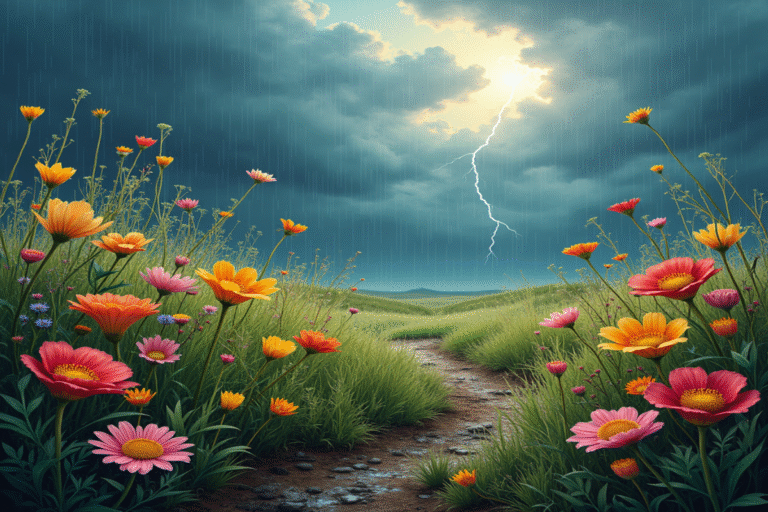Have you ever noticed how the landscape changes after a thunderstorm? The sudden burst of blooms after thunder, lightning, and rain is not by chance—it is nature’s response to environmental signals that has fascinated scientists, gardeners, and nature lovers for generations.
The Nitrogen Effect: Lightning’s Gift to Plants
One important way thunderstorms boost flowering is through nitrogen fixation. When lightning strikes, it breaks apart nitrogen molecules in the air and converts them into nitrates. These nitrates mix with rainwater and enrich the soil with nutrients that plants need.
This natural fertilization allows plants to access extra nutrients, quickly triggering blooming when the conditions are right.
Electric Stimulation: Nature’s Growth Signal
Some studies suggest that the electrical charges in thunderstorms may directly boost plant growth. The shifting electric fields during a storm can speed up the growth processes of certain plants.
Exposure to small electrical currents may increase the activity of growth hormones like auxins, which control cell growth and flower development, effectively turning on the bloom process.
The Pressure Connection
The rapid drop in air pressure during a thunderstorm may also signal some plants to grow and reproduce. This cue could help plants recognize the ideal moment for pollination and seed dispersal.
For example, desert ephemeral plants can lie dormant for years and then burst into bloom within hours or days after a storm, a survival strategy in harsh environments where good conditions are rare.
Ozone’s Hidden Role
Lightning also produces ozone (O₃). While high levels of ozone can harm plants, small amounts can trigger their defense responses by activating pathways that promote flowering, urging the plant to reproduce quickly under stress.
Which Plants Respond Most Dramatically?
Not all plants react the same way to thunderstorms. Species that evolved in regions with frequent storms often show the most pronounced responses:
- Desert ephemerals like desert lilies and evening primroses can sprout and bloom within a few days after a storm.
- Certain orchid species time their flowering with the monsoon, using electrical and pressure cues to begin blooming.
- Prairie wildflowers often display mass blooming events when thunderstorms sweep through grasslands.
- Rain lilies (Zephyranthes) are known as “storm lilies” because they can flower just days after heavy rain accompanied by lightning.
The Evolutionary Advantage
This sensitivity to thunderstorms likely evolved to boost plant reproduction. Blooming together after a storm offers benefits such as:
1. Moist soil that aids seed germination
2. Nutrient-rich conditions from lightning-induced nitrogen
3. Higher humidity that preserves pollen viability
4. Increased pollinator activity following the storm
Practical Applications
Understanding how thunderstorms trigger flowering has led to new ideas in agriculture. Some farmers and researchers are exploring electrical stimulation techniques to encourage blooming and improve crop yields without relying on chemicals. These natural methods may pave the way for more sustainable farming practices.
Next time dark clouds gather and lightning lights up the sky, remember that you are witnessing more than just a storm—you are seeing nature trigger a remarkable cycle of growth and renewal. The sound of thunder signals the start of a floral awakening, uniting sky and soil in a dance that leads to stunning blossoms.





